08-01-2022
John C. DerrickMauna Kea
Located within the Saddle Road Region on Big Island
This article may contain affiliate links. We earn a small commission at no extra cost to you. Mahalo!
Mauna Kea
Big Island Highest Point
The snowcapped peaks of Mauna Kea standing 13,796 feet high are at odds with the tropical and beach climate at its base. The tallest volcano on the island and from base to top the tallest mountain in the world, Mauna Kea is a wonder.
This giant has some of the clearest and calm air in the world, making it an ideal location for stargazing. Thirteen highly-sophisticated telescopes call the summit home. Astronomers from around the world live and study on the slopes of this dormant volcano. The road to access the summit of Mauna Kea is at mile marker 28 on Saddle Road. This area is very remote and the portion of Saddle Road from Hilo to Mauna Kea is in much better condition than that from Kona.
A normal car can make the six-mile drive up to the Onizuka Center for International Astronomy a.k.a. the Visitors' Center. They play different films about the volcano and its history throughout the day in several languages. There is also a store with souvenirs and supplies like brake fluid (could be handy for the ride down.)
The view from the Visitors' Center is impressive with rolling cinder cones and an unparalleled glimpse at Mauna Loa. Although, nothing compares to the awe-inspiring experience of setting foot on the summit. It is no surprise- given Hawaii's isolated location and Mauna Kea's outstanding height- that it has become very popular with astronomers. Mauna Kea is home to the Keck telescopes, Gemini Observatory, and the Canada-France-Hawaii Telescope, among others.
The weather on Mauna Kea allows up to 300 clear nights a year and rises above 40% of the world's atmosphere, making it ideal for studying the cosmos.
You should also note that many people are opposed to the large white and silver domes that adorn the summit. For native Hawaiians, Mauna Kea is a sacred place filled with tradition. For many, this volcano represents the beginning of life on Earth. It is for this reason that many rituals take place on Mauna Kea.
At 13,020 feet lies one of the most significant areas on the volcano, Lake Waiau. Nestled in the shadow of the cinder cone Pu'u Waiau, the lake, which is fed by permafrost, gives off a bluish-green tint. It is a tradition among many Hawaiian families to take the umbilical cord of a newborn child up to the mountain and place it near Lake Waiau to symbolize the family's connection to the Earth. Since the lake is considered to be where spirits enter and leave the world, many chiefs are buried near there.
The road beyond the Visitors' Center is unpaved for the most part and very steep. Do not attempt this drive in a normal car! A four-wheel drive vehicle and very good driving skills are required.
Be aware that the summit may occasionally be closed due to inclement weather; mainly because of snowy conditions. Even when it's not snowing, the summit is quite cold and windy. The extreme altitude can also make normal activities like walking difficult. Make sure to bring plenty of water and take it easy.
There are several guided tours that will take you to the summit and to the Visitors' Center for stargazing tours We highly recommend a guided tour for this adventure, as your safety is paramount. Many visitors who have misjudged the difficulty of the drive ended up off the road and, in some cases, dead. Touring with a skilled guide is the safest way to sit back, relax, and enjoy the views.
Hawaii Safety Information
Mauna Kea Photo Gallery
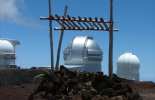


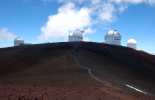
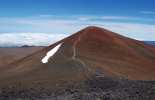
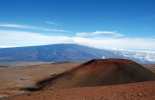
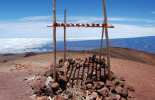
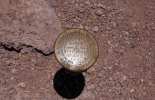

Affiliate Disclosure: We may earn commissions from some travel partners (like Amazon or Expedia) which helps us maintain this site. These links are at no extra cost to you and don't impact our honest & unbiased recommendations. Remove all the ads →












